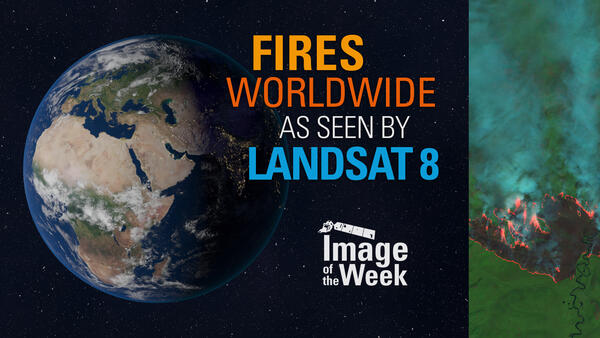Image of the Week - Fires Worldwide as Seen by Landsat 8
Image of the Week - Fires Worldwide as Seen by Landsat 8Landsat satellites acquire useful data on wildfires around the world. Their near infrared and shortwave infrared imaging allows for detection and mapping of fire, smoke, and burn scars often in remote areas.
In California: the Dixie Fire near Lake Almanor and the Caldor Fire near Lake Tahoe.
























